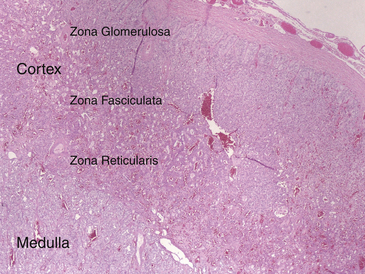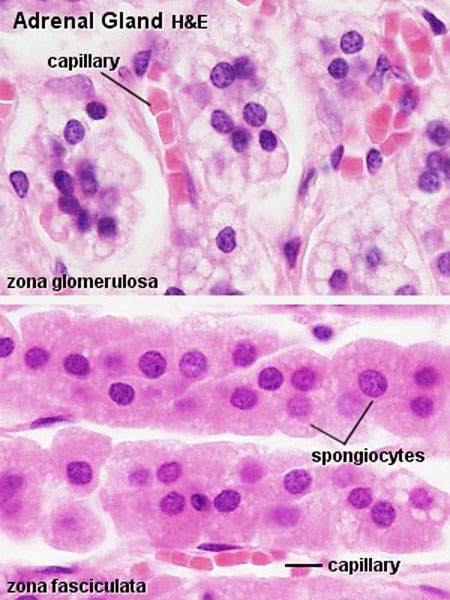

On imaging, adrenal CT scan or MRI could be helpful showing atrophy of the adrenals.

Check for plasma DHEA and aldosterone, they will be suppressed. Plasma renin activity can be checked and would be raised in this case.Adrenal antibodies can be looked for however these are not specific to the disease.The ACTH stimulation test is useful, as it would try to stimulate the production of the low adrenal levels and if the levels remain low this helps with diagnosis.Cortisol levels are to be checked in the morning at 8 am or 9 am, there would be deficiency.
#Zona fasciculata full#
Full blood count is very useful to check for anaemia and eosinophilia. It is important to check to urea levels in patients with Addison’s disease. Sometimes, in advanced disease there can be hypercalcaemia (raised calcium). Hyponatraemia (low sodium levels) and hyperkalaemia (raised potassium) can be found on initial blood tests.

Salt craving is specific to the disease and patients will have reduced aldosterone production and therefore be hyponatraemic.Hyperpigmentation of the mucosa especially sun-exposed regions of the body may indicate the disease.Fatigue is a symptom all patients with Addison’s disease complain about.Symptoms, which could indicate Addison’s disease, are as follows:


 0 kommentar(er)
0 kommentar(er)
